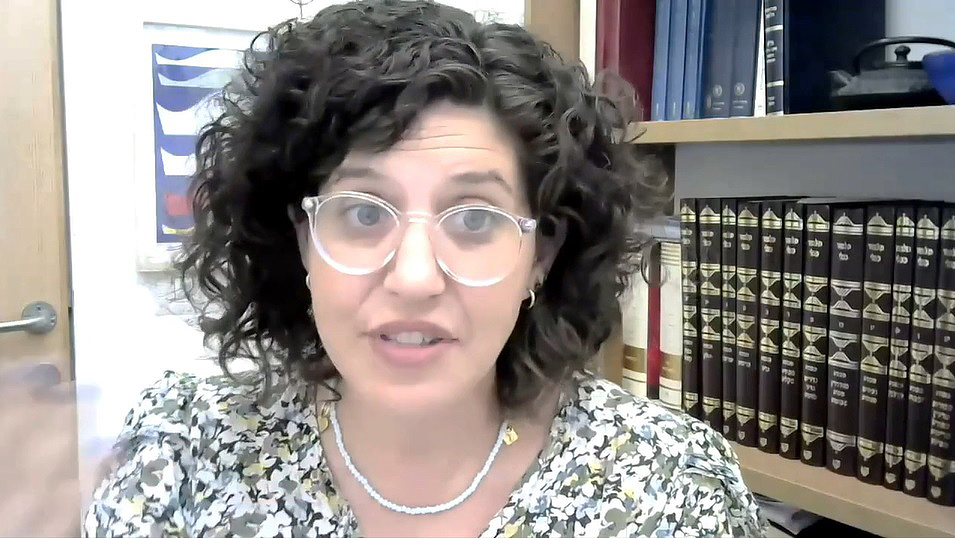

First published by Times of Israel
Close your eyes and tell me what image comes to mind when I ask: What does a Jewish religious leader look like?
Like it or not, we all carry subconscious images of what certain positions, statuses, or roles should “look” like – what gender they should be, what they should wear, how they should speak and act, etc.
These images are imprinted mostly through nurture rather than nature – how we are raised, what we are taught to think and believe, what we see in our communities and ambient culture.
When someone steps into a role that does not fit the image we expect, we feel it, even if we cannot clearly articulate it.
For many, Jewish religious leaders have varied looks – different genders, races, ethnicities, and so on. But this does not happen overnight – the image of what a religious leader looks like changes over time based on (a) who serves in these positions, (b) new messaging about who should serve in these positions, and (c) adaptive thinking.
Rather than trying to place a new model into old garb, true change means accepting each new “type” in full, with all of its accouterments. And this last piece can be especially jarring.
But it can also be exciting, when done well. A significant case study in the expansion of leadership images is the hiring of Rabbanit Carmit Feintuch as a religious leader in a Modern Orthodox synagogue in Jerusalem, Kehilat Ramban. To be sure, there have always been female religious leaders in Orthodoxy in more private forms or in educational settings.
However, the hiring of female clergy in Modern Orthodox synagogues is relatively new – one might say that the community has been flirting with the idea for the past 25 years. All this time, people have been trying to expand the subconscious and conscious imaging of said leadership to include women.
This process is obviously complicated. What does it really mean? Permit me to speak from personal experience, having served as clergy for eight years, in two Modern Orthodox Synagogues:
First and foremost, it means that people who are not used to this concept, even if it is something they want, may experience discomfort, perhaps even a discomfort that they cannot name. And this discomfort may express itself in many forms, from accidental micro-aggressions to purposeful offense. Unfortunately, such challenges are an inevitable part of communal growth.
Second, this means that people who are not used to this concept, even it if is something they want, may end up defining their new leader by what she does not do – she does not read from the Torah, she does not sit at the front of the synagogue – rather than by what she actually does: she does teach Torah, she does provide pastoral counseling, she does perform various ritual functions, and she does bring her own unique perspective and voice to the leadership of the community, in a way that may differ from the leadership that is already in place.
And third, this means that people who support female leadership will try to justify these new positions by harking back to exceptional women throughout Jewish and Orthodox history – from Miriam the Prophetess to the great scholar and teacher Professor Nehama Leibowitz (z”l). The problem with this approach is that each of these women was alone in her leadership, a glaring exception, with little hope of becoming the norm. The danger here is that well-meaning people will continue to “exceptionalize” this new leadership model, rather than normalize women leaders in the community.
To effect true change, people must ultimately think adaptively. A woman leader will “lead” differently than a man leader – she will dress differently, her voice will likely have a different register, her seat in shul may indeed not be up front. But her difference must become a new normal, rather than remaining a difference. And this can only happen when the critical mass of such leadership increases.
In the meantime, what should be done to help ease the way?
To address the issue of challenges that new female leaders face, communities must create an environment in which people are not naive about these difficulties. Such recognition and openness will foster self-reflection by community members about their own role in this dynamic – feelings, speech and actions. It will likewise encourage clergy to seek support from colleagues and from others to discuss some of the real discomfort that may impact them in their work.
To address the issue of defining a person by what she is not, may be more complicated. On the one hand, job descriptions matter a great deal in this regard. They provide definition for other women who embark on this path, and they help people avoid explanation fatigue. On the other hand, it is common knowledge that the job of a communal leader bleeds beyond the boundaries of a clear job description – for good and for bad. But there is also simply the question of rhetoric – how do people speak about these new leaders? Where is the emphasis placed: on what they do, or on what they don’t do?
To address the issue of exceptionalism, let us answer precedent with tradition. We must recognize the direct connection between generations of women and among networks of women within a given generation who have inspired one another to serve God through the learning and the teaching of Torah and through service to the Jewish People. These women are not unconnected dots on the landscape, merely benefiting from a zeitgeist of openness and literacy. Rather, they are actors within tradition, working together and passing the torch from spiritual mother to spiritual daughter, whether directly or through the indirect work of inspiration.
This, my friends, is the chain of tradition.
You care about Israel, peoplehood, and vibrant, ethical Jewish communities. We do too.
Join our email list for more Hartman ideas